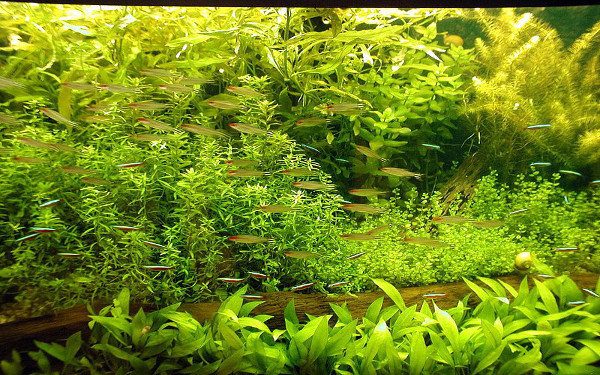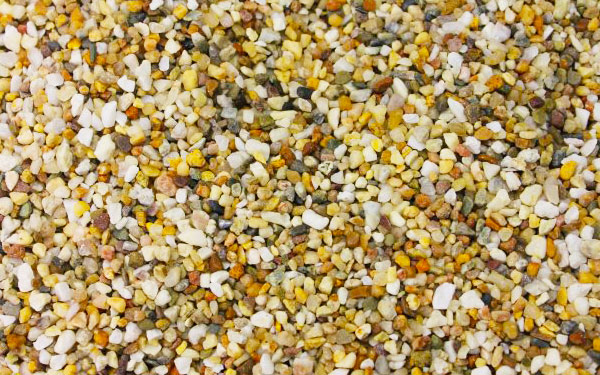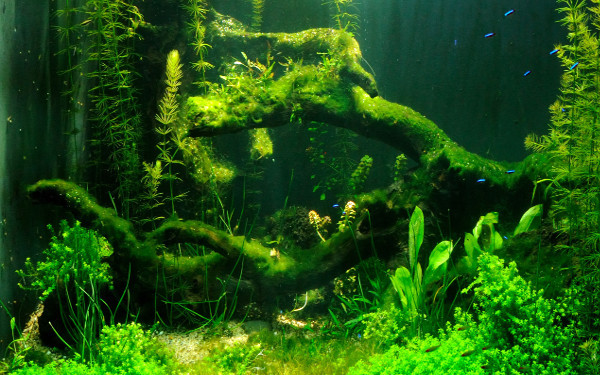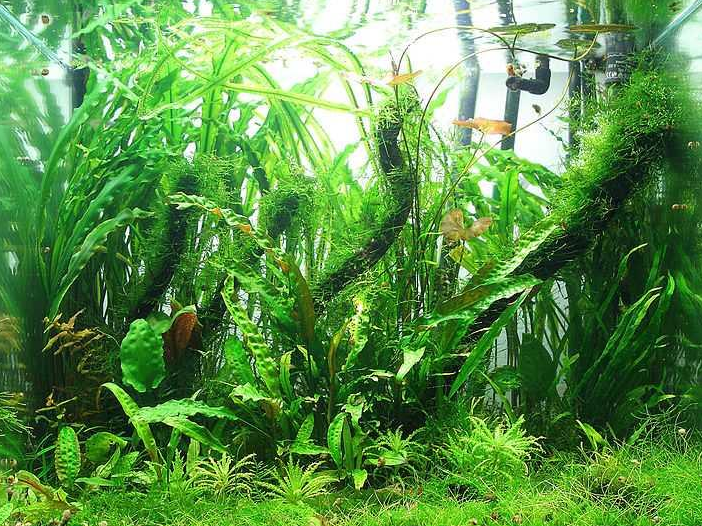How to succeed with a planted aquarium
Aquarium plants and the aquatic plant hobby are growing in popularity as aquascapers become more experienced, better equipped, and gain inspiration from online photos and videos of stunning planted aquaria.
A thriving planted aquarium can not only be visually appealing and relaxing to watch. It can become a functioning ecosystem in its own right, benefitting fish and helping to naturally combat nuisance algae. And you don’t need a green thumb from terrestrial gardening in order to achieve success.

What do I need for a planted aquarium?
Any aquarium containing live plants could be classed as a planted aquarium, although the type we’re going to focus on is where plants are the dominant decorative material and the equipment, lighting, substrate and fish are all tailored to best suit their needs.
To properly succeed with aquatic plants, first, we need to know what their needs are and how to grow them. Plants need light and trace elements, and that comes in the form of LED lights and liquid fertilizers.
They also need something to root into like gravel, coarse sand or soil (not garden soil,) and ideally, that substrate will contain nutrients too, so the plants can obtain nutrition both through their leaves (and fertiliser in the water,) and via their roots, and fertilizer tablets.

In planted aquariums plants benefit from filtration too. Mechanical filtration traps particles that would otherwise block their light, settle on their leaves and cause algae growth. And the flow from a filter helps to distribute liquid fertilizers and mix dissolved gases in the water, like CO2.
Plants use CO2 as a building block and in the planted aquarium a lack of CO2 can limit growth. That’s why CO2 kits are available to introduce carbon dioxide into aquarium water during the day and to aid plant growth.
So live plants need light, nutrients and CO2. And once you’ve cracked how to grow healthy plants you can move on to the fun part - aquascaping! But first, let’s start with the most fundamental piece of plant growing equipment - light.
What is the best light for aquarium plants?
Aquarium plants need lighting with the right spectrum if they are to be healthy and grow properly. This may be slightly different to the stock lights supplied in your aquarium package so many planted aquarium owners and aquascapers swap their lights out for those with dedicated plant spectrums.
The colour of light is measured in Kelvin and most plant lights have a Kelvin rating between 6500 and 9000, with 6500K having a yellower hue and 9000K having a whiter hue.
Plants actually enjoy the red spectrum of light, right down to about 3000K, but this doesn’t make the planted aquarium look very aesthetically pleasing so most plant growers use either a single lamp or several lamps with RGB (red, green, blue) in their spectrum to both enhance healthy plant growth and bring out the rich reds of fish and plants to the human eye.
Plant growers tend to use either fluorescent light tubes or LED lighting like Fluval Plant for plant growth. Fluorescent has been used for decades and if you provide plant spectrum tubes and enough of them for the depth of the tank, plant growth should be enhanced. Reflectors can be used for increased light output down into the tank and T5 tubes are the brightest available.
If using multiple T5 a combination of plant, natural daylight, cool white and colour enhancing bulbs can be used to achieve the best overall look and colour.
LED lamps are also available in tube form to mimic and even fit into T5 lamp holders, again available in several spectrums to encourage plant growth, give a clean, white look, or enhance colours.
Opt for an open-topped planted aquarium and high powered LEDs can be mounted to the tank rim to provide very bright light for plant species that require it, like red plants. Many high output LEDs use fan cooling (so don’t drop them in the water,) but have the advantage of app control and colour, brightness and duration that is programmed by the user.
This enables a perfect balance of spectrum and output and can even fade in and out to simulate the dawn and dusk light cycle.
It’s not all about light!
But for many plant species, healthy aquatic plant growth is not all about light, however, as plants also need plant food to fuel growth. If you increase the lighting in your planted aquarium but not increase the amount of plant food your plants may become leggy, weak and succumb to opportunistic algae, which also enjoys bright light.
Not all live plants require bright light either, with Anubias from West Africa naturally inhabitting shaded forests.
Light can be measured with a PAR meter - which stands for Photosynthetically Active Radiation, or Photosynthetically Available Radiation. Whatever light fixture you use needs to provide enough PAR to grow specific plants and also in the right light spectrum.
Aquatic plants differ in their lighting requirements from the shade-loving Anubias mentioned above to light hungry carpeting plants, stem plants and floating plants, that enjoy sunbathing in direct sunlight in equatorial climates.
The brighter the light, the less time you need it on for, with 8 hours being enough in high light situations and 10-12 hours in lower light situations. Anything over 12 hours is excessive, the plants don’t need it, and you’ll just get algae blooms.
Use multiple high output aquarium specific lights in combination to achieve high PAR and optimal growth. Ordinary incandescent bulbs have low PAR so serve no benefit.
What are high tech and low tech planted aquariums?
These were terms created by the aquascaping community to categorise planted tanks, their equipment and subsequent plant growth rates. Most plants are amazingly adaptable regarding light and nutrients - they’ve had to be to survive in the wild for millions of years. So they grow quickly in bright light with lots of nutrients and slowly in low light with fewer nutrients.
A planted tank with bright lighting, lots of plant fertiliser and lots of CO2 is known as a high tech planted tank. And a tank with dim lighting, no CO2 and very little liquid plant fertiliser is known as low tech. They then have correspondingly high or low filtration turnover too, so high-tech has lots of water flow and a low tech planted aquarium has less.
Another, better way to describe them is high energy and low energy. Put your foot down on the accelerator in a car and it travels faster but uses more fuel, and plants are the same. Bright light causes plants to metabolise faster so they need more food, more CO2, and stronger water flow. Without those other factors they will run out of fuel, and algae will take over on their leaves.
But place the same plants in lower light and they metabolise slower and need less fuel. Same plant species, just different energy levels and food requirements and different ways to run your tank.
How to filter a planted aquarium
Planted tank enthusiasts use power filters, and they can be either internal canister filters, external canister filters, or hang-on (HOB) filters. Undergravel filters aren’t used because the fine substrates clog them up, and plants don’t like the relatively fast circulation over their roots. Air powered sponge filters aren’t widely used either because they last circulation flow across the whole length of the tank, and they’re unsightly. They are still popular in shrimp tanks, however, where mosses like Java moss will do just fine.
High energy planted tanks employ power filters that can turn over the entire tank volume 10 times per hour, so that’s one or two power filters turning over 600lph on a 60-litre tank, 1800lph on a 180-litre tank, and so on. But for most situations, five times turn over is fine, and even less for low energy planted tanks.
Choose a filter with mechanical, biological and chemical media capability as all can come in handy for planted aquaria. As we stated earlier mechanical filtration traps particles, organic matter and uneaten food.
But biological filtration, biological processes and beneficial bacteria, in particular, are important for converting ammonia which is toxic to fish and causes algae growth in planted aquaria.
Carbon is a form of chemical filtration and can help remove dyes and odours from the water and keep it crystal clear. It doesn’t promote algae growth.
So a combination of three-stage filtration and regular water changes is best to keep water chemistry in check.
Do I need a heater for a planted aquarium?
Most aquatic plants will grow absolutely fine at room temperature - so 20C and above. The deciding factor is if you want to combine tropical fish like tetras and rasboras or if you happy with temperate (unheated,) plant-friendly fish species like Danios and White Cloud Mountain Minnows.
And if you want the king of the planted aquarium - Discus - then they need a water temperature of 28-30 Celsius so heaters are a must-have. But plants are very hardy regarding temperature.
Should I add Carbon dioxide?

Carbon dioxide, or CO2, aids plant growth and generates more plant mass. If the tank is lacking CO2 plants can become weak and susceptible to algae. But there are some factors you need to be aware of before using it. There are many types of CO2 kits but the best ones use a pressurised gas bottle with a metal valve and dials. These should be kept out of reach of children because they operate at high pressure.
CO2 is also poisonous to fish in high levels and if you add too much you can kill your fish. That’s why you should use a CO2 indicator, also known as a drop checker. But if you add a little caution during set up and use, your plants will thank you for it, difficult plants will become much easier to grow and you are more likely to succeed.
But if it all sounds a bit complicated and expensive, opt for a low energy approach with no CO2 or add liquid carbon - a special additive that behaves like CO2, instead.
What substrate do I need?
We cover planting substrates extensively in a separate article but the ideal substrate should be deep, soft and nutritious. Aquatic plants grow in muddy ponds and riverbanks in nature, not in stony hill streams, so aquatic soil, a rich substrate specially selected for planted aquaria, is preferable to a thin layer of bare aquarium gravel.
Start at the bottom by placing a deep layer of aquatic soil on the base of the tank. Aquascaping soil is soft for roots to bury into, high in organic matter, holds nutrients to fertilise plants and holds rocks and wood in place easily.
There is no need to pre-wash soil so pour it straight onto the tank base and bank it up, front to back, so it’s a thin layer about an inch deep at the front of the tank and anything up to six inches deep at the back. Use your hand, a dry paintbrush or a gravel rake to smooth the soil surface.
Unfortunately, soil (or any planted aquarium substrate,) can’t be combined with fish that dig, so that includes most catfish and most cichlids, except dwarf species. For those species use aquarium gravel with root tabs pushed directly under the plant roots, then rocks around the roots to protect them.
Shrimp are safe with soil and there are even specialist shrimp stratum soils to perfectly suit shrimp and plants.
How to aquascape a planted tank
Few freshwater aquariums look more stunning than a planted tank. But it’s the first few steps of setting it up that can make the difference between an average looking scape and a jaw-dropping Nature Aquarium.
After the soil layer, wood is next, so choose, large, appealing pieces that look natural, without squared off or sawn corners. Be brave with your wood choice and choose one or two pieces of the same type of wood, laying them diagonally with the fat end in the soil and the thin, branching ends pointing up towards the water surface. Wood can be placed so that it sticks out of the water, for added, natural effect.
Once the wood is in place choose one type of rock and place chunks of it around the base of the wood. Place the largest pieces next to the trunk and radiate smaller pieces outwards from that. Rocks can be broken up with a hammer and small fragments scattered around the outward faces of the rocks. Ordinary aquarium gravel can then be sprinkled around the small rocks to add even more texture and perspective.
How to plant aquarium plants
Plants come in three main forms for fish tanks - potted, bunched and invitro - and all should be prepared differently before planting.
Potted plants have rootstock, usually grown in a rock wool base, and inside a slatted plastic pot. First, remove the plant from its plastic shipping packaging, then slide the plastic pot off and lie the plant on its side.
Tease away the rock wool until the white plant roots are showing. Try to remove as much rock wool as you can just leaving bare roots, but if some rock wool is left clinging to the roots that’s ok. Snip the bottom half of the roots off. This will make planting easier and encourage new growth.
If several plants were growing together (like with Cryptocoryne,) tease them apart into separate plantlets, each with their own roots, then push slowly into the planted aquarium substrate using planting tweezers.
Bunched plants are typically taller plants and arrive with a foam strip and metal weight wrapped around them. Remove the foam and metal, exposing the plants. For rooted plants like Amazon sword plants and Vallisneria separate the plants into individual plantlets, snip half the roots off like before and plant as before.
For cut shoots like Myriophyllum, Elodea and Ceratophyllum, they don’t come with or need roots in the substrate, so simply separate into individual stems and plant with tweezers, spacing each stem about an inch apart. Place tall plants at the back and short ones at the front.
Invitro plants are smaller plants that have been tissue cultured in a laboratory. They come growing in a clear gel containing all the nutrients required, inside sealed pots, typically containing lots of small, carpeting foreground plants like Eleocharis.
Peel off the lid revealing the root mass and gel, and rinse under the tap to remove as much gel as you can. Either tease the root mass apart into 2” portions or simply cut the root mass into plantable portions with sharp scissors. Push the plantlet portions into the substrate using tweezers, as before.
Fill the tank with tap water to a depth that just covers the soil, as it makes it easier to plant into. Using tweezers, plant each clump of plants into the soil, placing tall species at the back and small, carpeting species at the front. Cryptocoryne look particularly effective when placed in the crevices in and around rocks and wood.
Tie Java Fern, Anubias and mosses to the wood using fishing line before filling the aquarium. Dechlorinate, add liquid fertilizers, then fit a CO2 diffuser in an area of strong circulation and a drop checker (to indicate CO2 levels,) at the other end of the tank.
Fit external pipework, plug-in heater, switch them on and set the light to come on for a fixed eight-hour photoperiod every day.
About a week later introduce the first algae eaters like Otocinclus catfish and Algae eating Japonia shrimp, Caridina multidentata. Change the water regularly, fertilise on a daily basis and wait for your underwater garden to grow.
How to grow aquarium plants
Your new plants will arrive fresh and healthy, but it will take some ongoing work from yourself to get them growing underwater. Just after adding plants, plug the lights into a timer and have it come on for 8-10 hours per day, every day. Feed a complete liquid fertiliser either daily or weekly and remove any dead (yellow,) leaves and algae build up.
Because aquatic plants are grown emersed (out of the water,) in the nurseries they will shed those leaves once placed submerse (underwater,) in your aquarium. The tank may also go through an ugly initial phase, where brown algae cover the substrate, rocks and plants. This is normal but also an indicator that the tank is immature and that a complete biological ecosystem hasn’t been fully formed yet.
If time allows, algae wipe the aquarium every day for the first few weeks, and water-change every day, while ensuring to replace the equivalent amount of liquid plant fertiliser. Liquid carbon used as well as CO2 gas can help prevent algae growth in those few weeks.
CO2 should be turned on when the first plants are added and added at a regulated amount throughout daylights hours, and when the aquarium lights are on.
A drop checker should be placed in the aquarium and will go blue if there is not enough CO2, green if it’s just right, and yellow if there’s too much and it’s dangerous to fish. CO2 can be switched off manually at night or automatically, using a solenoid plugged into a light timer.
CO2 levels should be kept constant for better plant growth. Inconsistent Co2 has been linked to algae problems and is the main issue when employing cheap yeast-based systems or aerosol Co2. Ensure you have a spare pressurised CO2 bottle to use when the other runs out or is being refilled.
FAQs
Are planted tanks better for fish?
They can be, because as well as producing essential oxygen, live aquatic plants can soak up ammonia and nitrate, two things that we would otherwise need filtration and water changes to deal with in a normal fish tank.
Plants also provide somewhere to hide for timid species and somewhere to release eggs and fry for egg scattering fish species like tetras or livebearers like Guppies. Just don’t combine plants with large destructive fish like Central American cichlids (as they’ll dig them up and eat them in a planted tank.)
Does a planted aquarium need cleaning?
Yes, and sometimes as much or even more than a normal fish tank without live plants and with ordinary aquarium gravel.
You’ll need to wipe the inside glass daily to remove green algae build-up and change the water regularly to dilute excess nutrients and keep water chemistry in check. Dead plant leaves should be removed, organic debris vacuumed off the substrate, and filter media cleaned regularly. All this is to prevent algae, which is the enemy of the planted aquarium.
Nature does have some little helpers, however, like algae-eating Otocinclus Midget Sucker catfish and Algae eating freshwater shrimp like Amano shrimp, Caridina multidentata, and Cherry shrimp, Neocaridina davidi.
They will tirelessly graze all the surfaces into your planted aquarium, eating some algae growth and cleaning the leaves of plants. They are well worth adding to all planted aquariums with small to medium-sized fish.
Can you have an aquarium with just plants?
Yes, and this was popularised in Europe some 50 years ago. You could just have freshwater shrimp acting as tiny janitors in a planted tank or no animals at all, although you would have to do more maintenance.
What the plants will need more however is a complete liquid plant fertiliser that contains all the essential nutrients and trace elements including Nitrogen, Phosphorus and Potassium, or NPK. Small amounts of this come from fish food and fish waste and without those nutrients plants will be deficient and become weak. Fertilizer tablets like root tabs aid all plant roots and can be added retrospectively to an inert substrate, unlike soil.
And unless you have an airtight lid, mosquitoes will lay their eggs in the water, giving you a bug problem long term. So fish do have their uses and Guppies are introduced to fishless waters worldwide to control mosquitoes and their subsequent diseases.
What size tank do I need for a planted aquarium?
Planted tanks can be absolutely tiny at less than a litre, to some of the world’s largest tanks like the late Takashi Amano’s 40 metre planted aquarium in Portugal. The deciding factor is actually the livestock.
Tiny shrimp are ok in tanks as small as 10 litres but even small fish species really need aquarium volumes of 20 litres or more. A tiny fish tank is called a Pico, and small tanks under 40 litres are called nano. Plants grow quickly however so research their height and spread and choose plant species accordingly.
While you're thinking about your aquarium's decor and plants, you might want to stock up on planted aquarium treatments. Why not try our brand-new Swell Planted range including Swell Planted Aquarium Nitrogen, Swell Planted Aquarium Phosphorus, Swell Planted Aquarium Potassium, Swell Planted Aquarium Booster, Swell Planted Aquarium Iron, Swell Planted Aquarium Carbon and Swell Planted Aquarium Root Tabs.









